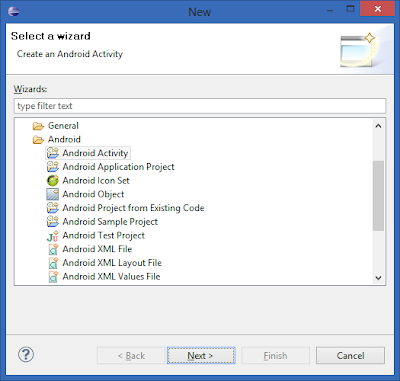Since I can be a little paranoid, I'm not about to run whatever commands someone on the internet tells me to. First, I want to figure out what those commands are doing.
(Note that while the instructions work for the most part, they originally said to put the su binary in /system/xbin, I found that it actually needed to be placed in /system/bin and I've changed these instructions accordingly).
So let's get in to it, going step by step through the commands outlined in the instructions.
Hook your phone up to your computer in debugging mode and connect to it with adb.
adb shell
# cd /sdcard
# cp su /data/local/12m/
# cp debugfs /data/local/12m/
These commands are copying the su and debugfs programs from your sdcard to a local directory on your phone where they can be used later. su, as I'm sure you all know, is a program that allows a user to elevate their privilege level to root under the right conditions. debugfs isn't quite as common. It allows the user to easily examine and modify characteristics of the filesystem. In this case it will allow us to change permissions as a part of the rooting process. It isn't clear to me where the best place to get these programs is, so I'll leave that to you.
# cd /data/local/12m
# chmod 755 su
# chmod 755 debugfs
Here we're making sure any user can read and execute su and debugfs. Pretty standard stuff.
# mv batch batch.bak
# ln -s /dev/block/mmcblk1p20 batch
This is a little strange. Why are we moving 'batch' and replacing it with a link to some random device?
We'll start with looking at what exactly /dev/block/mmcblk1p20 is.
cat /proc/partitions
major minor #blocks name alias
7 1 17703 loop1
179 0 15552512 mmcblk1
179 1 128 mmcblk1p1
179 2 512 mmcblk1p2
179 3 512 mmcblk1p3
179 4 1 mmcblk1p4
179 5 512 mmcblk1p5
179 6 512 mmcblk1p6
179 7 4096 mmcblk1p7 pds
179 8 512 mmcblk1p8 utags
179 9 1024 mmcblk1p9
179 10 2048 mmcblk1p10
179 11 512 mmcblk1p11
179 12 512 mmcblk1p12
179 13 4096 mmcblk1p13
179 14 8192 mmcblk1p14 boot
179 15 9216 mmcblk1p15 recovery
179 16 217088 mmcblk1p16 cdrom
179 17 512 mmcblk1p17 misc
179 18 512 mmcblk1p18 cid
179 19 4096 mmcblk1p19 kpanic
179 20 655360 mmcblk1p20 system
179 21 1048576 mmcblk1p21 cache
179 22 622592 mmcblk1p22 preinstall
179 23 1364992 mmcblk1p23 webtop
179 24 3203072 mmcblk1p24 userdata
179 25 8401792 mmcblk1p25 emstorage
179 26 128 mmcblk1p26
179 64 1024 mmcblk1boot1
179 32 1024 mmcblk1boot0
179 96 15558144 mmcblk0
179 97 15554048 mmcblk0p1
254 1 17703 dm-1
We can see that mmcblk1p20 is an alias for 'system'. Now, looking at the 'mount' output, we see that /dev/block/system is mounted to /system.
mount
...
/dev/block/system /system ext3 ro,noatime,nodiratime,barrier=1,data=ordered 0 0
...
So we're making /data/local/12m/batch point to /system instead of whatever it pointed to before. Why would we do that?
Now let's take a closer look at that the /data/local/12m directory:
ls -l /data/local/12m
drwxrwx--x mot_tcmd shell 2011-10-20 22:48 batch
We can see that here the shell group has read, write and execute access.
According to djrbliss:
Since the contents of /data/local are group “shell” and group-writable, we can modify the contents of this directory using ADB. By logging into the device and replacing one of the sub-directories listed here with a symbolic link, then when the device reboots it will change the ownership of the symlink target to group “shell”. This can be used to edit property files to manipulate the behavior of ADB to achieve root.So, by creating this symbolic link and rebooting the device, we're changing the permissions of /system to allow the shell group to have read and write access, which is exactly what we need to get root.
# exit
adb reboot
adb wait-for-device shell
Wait android shell:
Now that we've made those changes we reboot to get them to take effect.
# cd /data/local/12m
# rm batch
# mv batch.bak batch
This puts the batch directory back the way we found it; though /system will still have the updated permissions.
# /data/local/12m/debugfs -w /dev/block/mmcblk1p20
This opens the mmcblk1p20 device (that contains /system) in readwrite mode within debugfs.
Now, at the debugfs prompt:
debugfs: # cd bin
debugfs: # write /data/local/12m/su su
debugfs: # set_inode_field su mode 0104755
debugfs: # set_inode_field su uid 0
debugfs: # set_inode_field su gid 0
debugfs: # quit
This puts the su binary in /system/bin, sets to allow anyone to execute it, has the root user own it puts it in the root group.
# cd /data/local/12m
# rm su
# rm debugfs
# exit
adb reboot
This removes the temporary files we put in /data/local/12m and then reboots. When the system comes back up, we should have root.
The rest of the instructions tell you how to install superuser, make sure you have root and how to keep it. That's all pretty standard stuff, so I won't go in to it here. Have fun.













